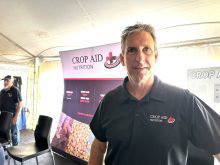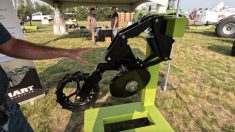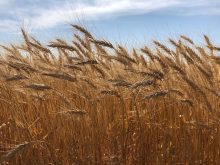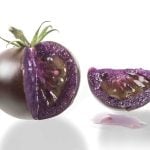Bourgault showed its PLS, PLX and PLDS openers at its display on the grounds of the Ag in Motion farm show near Langham, Sask. in July. Like other popular brands, it’s best known for the the original opener design it went to market with several years ago. That was a single knife for seed placement paired with a mid-row bander for fertilizer.
But the company now gives buyers a much broader choice of options when configuring a new drill.
“If you can’t find the (opener) that fits your operation, you haven’t looked hard enough at our company, especially since the last four seasons,” says Bourgault sales territory manager Curtis Hinrichsen. “You should be able to find an opener that fits your operation, because we have a broad selection. There’s a reason for that. Every farm wants to put their fertilizer down in a different manner. And we offer all the different types.
Read Also

Claas brings 1000 Series SP forage harvesters to Canada
In mid-August, Claas unveiled its new line of Jaguar forage harvesters at an event in Visalia, California, deep in the heart of that state’s dairy region.
VIDEO: Bourgault openers designed to fit your operation
“The product we come from in our history is a single knife opener, narrow tipped with a mid-row bander for fertilizer, says Hinrichsen. “That’s what everyone seems to know Bourgault for. That one we refer to as a PLS.”
Now, the brand has two other opener designs in its portfolio — so farmers can tailor a new drill to better match what works best for their soil types and farming practices.
“The second type of opener we came up with in 2012 is the PLX. Its heritage comes from the XTC, which was an extreme terrain contouring opener, a para-link extreme. That one is meant more for ground that contours a lot, hilly, washouts, ditches, that kind of thing. It’s a one-to-one opener with very good depth control. It’s typically used with a narrow opener.”

A few years ago Bourgault began offering the dual-knife PLDS model, which is capable of side-banding fertilizer. That style has been very common offering across the industry.
“A lot of the industry uses that style of opener,” Hinrichsen says, “and we know it has some benefits. But like a single-knife it has some drawbacks too. That’s why we let the customer decide which one fits their operation, depending what they want to do fertility wise and with their farming practices.
“Each of these openers lends itself to different farming operations. That’s why we feel there’s a need for all these different styles of openers.”
The dual knife design puts fertilizer placement closer to the seed row than mid-row application. It offers quick emergence, but it doesn’t perform as well in fields with heavy trash, when compared to a single knife opener.
“Trash clearance with a single knife and banders is significantly better than a dual knife for residue clearance,” he adds. “But if you manage your residue properly, you’re fine with a dual knife, even on a ten-inch spacing.”
To add even more options for fertilizer placement, Bourgault has introduced what it calls its TriMax opener arrangement, which is dual knife openers paired with mid-row banders. That offers growers a lot of choice as to where to place fertilizer separately or in combination and works well in one-pass seeding operations, even with heavy rates of fertilizer application.
“If you’re going to put very high rates (of fertilizer) down with the seed, that’s where we feel mid-row banding or TriMax offers some benefits,” he adds.
“Some soil types can’t handle as high a rate as close to the seed as others. Maybe a dual knife in a heavy clay soil that’s predominantly wet can get away with a little higher rate of fertilizer than one that’s a little drier and loamier.
“In my mind (the Trimax) is the pinnacle for agronomic reasons. You can put your seed and fertility wherever you want.”
















